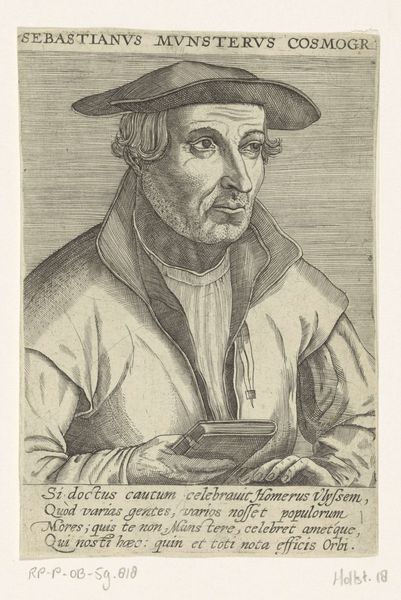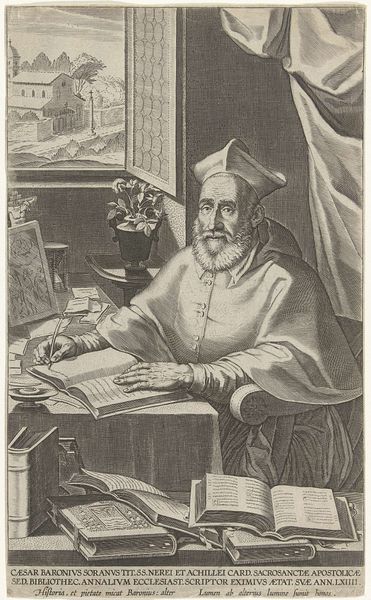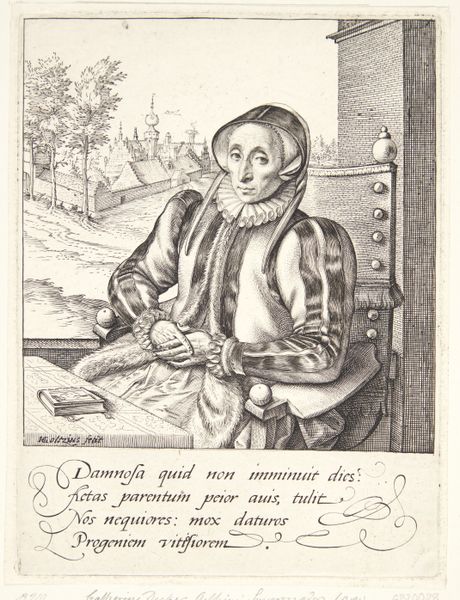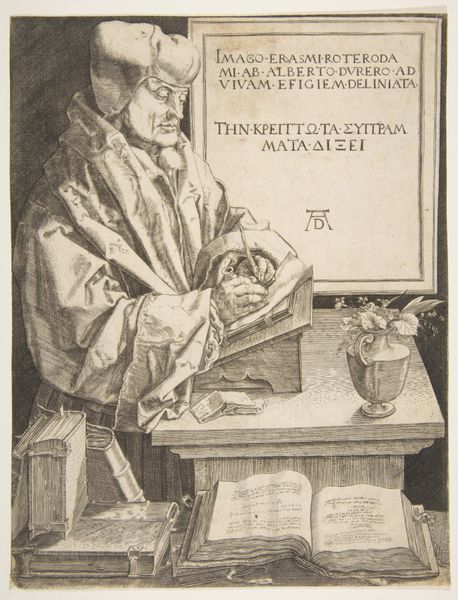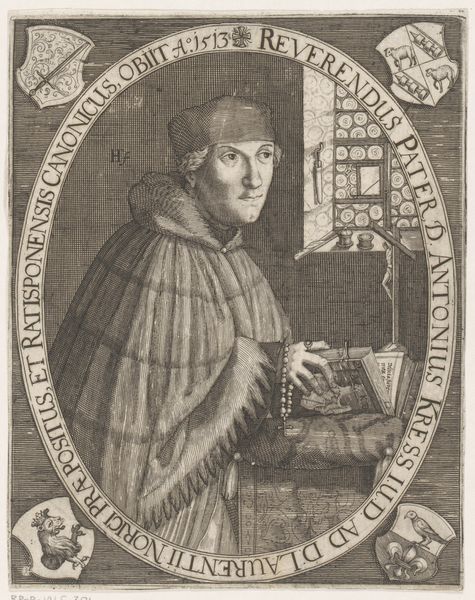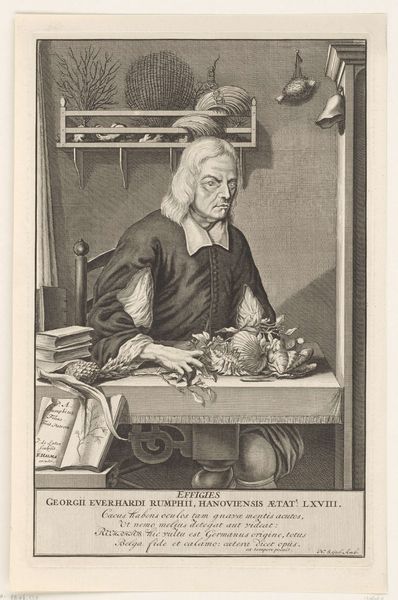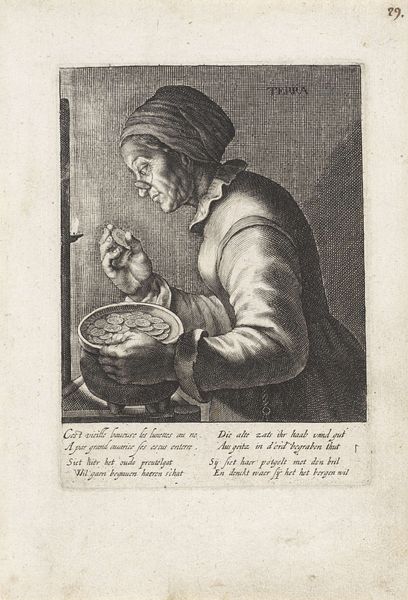
drawing, print, engraving
#
portrait
#
drawing
# print
#
11_renaissance
#
history-painting
#
northern-renaissance
#
academic-art
#
engraving
Dimensions: height 303 mm, width 237 mm
Copyright: Rijks Museum: Open Domain
Curator: Here we see "Portret van Gemma Frisius," an engraving crafted by Jan van Stalburch around 1557. It's currently housed in the Rijksmuseum. My initial impression is that it has a slightly austere mood, punctuated by the intricacy of the scientific tools surrounding Frisius. What catches your eye first? Editor: The density of information strikes me – it's overwhelming in the way that Renaissance intellectualism often was. The portrait serves as an assertion of Gemma Frisius’s intellectual status within a specific, and very male, academic milieu. Look at how knowledge itself becomes a form of symbolic capital displayed so prominently. Curator: Indeed, the composition is remarkably effective. Stalburch's precise lines highlight Frisius’s contemplative pose as he examines a globe. There’s an emphasis on texture—the rendering of his clothing, the crisp edges of the books in the background. Each object contributes to a broader understanding of his persona. Editor: But beyond the surface textures, I find myself questioning whose image this engraving truly serves. Is it solely a testament to Frisius, or also a validation of the patron and the engraver? The inscription seems laudatory, almost hagiographic. How much of the subject's actual contributions or beliefs are suppressed or skewed to fit prevailing ideological currents? Curator: That is a valid point. Focusing on the intrinsic qualities, we observe the symbolic language of the objects - books, instruments. They all speak to the humanist dedication to knowledge and scientific exploration that characterized the period. Stalburch has clearly composed an image to evoke respect and intellectual authority. Editor: Precisely. And considering that historical context—the burgeoning printing industry and the Reformation—dissemination of images carried immense political weight. How would a piece like this have been read in different circles? Would it have been viewed as simply a neutral celebration of knowledge, or might some have perceived an implicit alignment with humanist, potentially reformist ideas? It certainly opens up interesting possibilities. Curator: An enriching point to consider, indeed. It's precisely this fusion of visual and intellectual elements that render it an outstanding piece. Editor: Absolutely, a portrait deeply embedded in the cultural and political complexities of its time, making it much more than a simple representation.
Comments
No comments
Be the first to comment and join the conversation on the ultimate creative platform.

